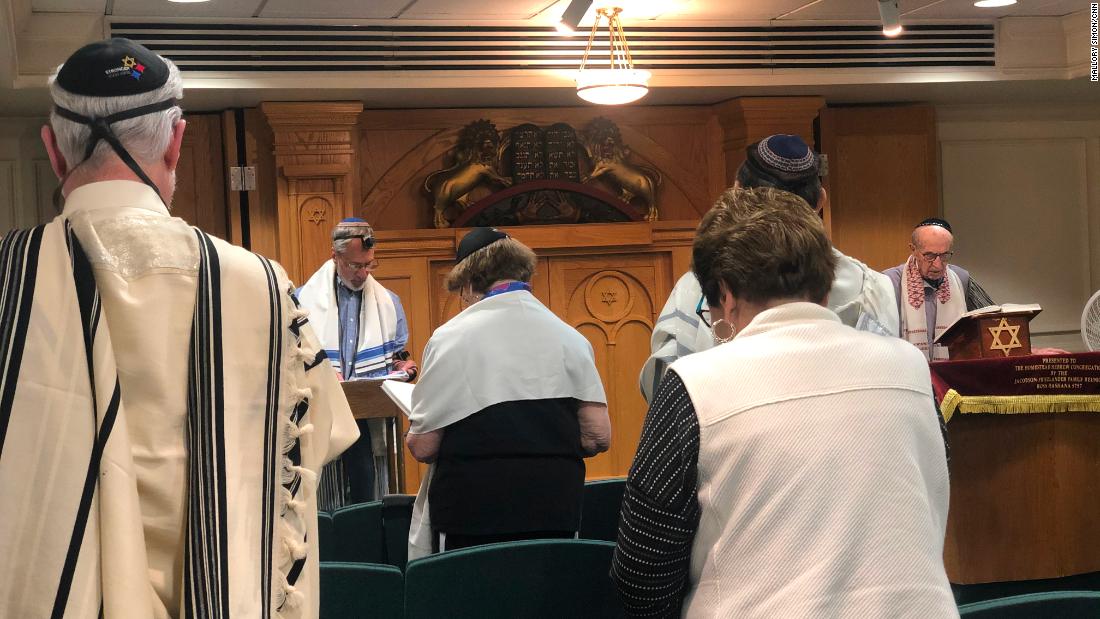Just as we developed robust mechanisms to track and hinder foreign terrorists in the aftermath of 9/11, we need the same type of response today to address white-supremacist extremists and neo-Nazis.
From Pittsburgh to Poway, California, where another synagogue was
attacked this April, to Christchurch, New Zealand, where
51 Muslims were murdered at two mosques this March, to August’s
massacre at a Walmart in El Paso, Texas, which claimed 22 lives, white-supremacist extremists appear to be increasingly emboldened, violent and connected — in their online forums, their thinking and their tactics.
Since the attack in Pittsburgh, American law enforcement has
arrested individuals in multiple states— in Washington,
Georgia,
California and
Ohio — for plotting attacks on synagogues and other houses of worship.
White supremacists are on the march — and this reality is increasingly recognized by law enforcement.
In recent testimony to Congress, the FBI noted that it has over
850 domestic terrorism investigations in the US, a “significant majority” of which are related to white supremacist extremists.
The United States Department of Homeland Security’s recently released
Strategic Framework for Countering Terrorism and Targeted Violence noted the major and growing problem presented by white supremacists, as well as the increasing threat of domestic terrorism, with specific reference to recent attacks on the Jewish community.
Still, close to a year after the attack in Pittsburgh, there’s much more we can do to address the threat.
The federal government — and law enforcement specifically — currently lacks the authority and proper tools to address domestic foreign terrorist organizations in the ways that it has effectively fought against foreign terrorist organizations.
Just as the law allows for Islamist extremist groups to be designated as terroristic, allowing authorities to monitor these groups’ communications, track and choke off their finances and as prosecute those who support them, white supremacist extremist groups
should be treated the same.
There is work to be done in the private sector, too. The technology sector must be more engaged in de-platforming white-supremacist extremist content from its various platforms, as tech companies have
worked to do with Islamist extremist material.
Lastly, religious communities must act more decisively.
Most religious facilities are designed to be welcoming, open places where the faithful gather. In the Jewish community, we are taught to welcome the stranger. This can become a vulnerability. We must now balance policies that welcome the stranger with the concern of ensuring that the stranger does not mean us harm.
On October 9th, in Halle, Germany, a gunman
sought to enter a synagogue where 51 worshippers, some of them American, were attending a Yom Kippur service. But the door was locked while the service was being conducted, and his attack was thwarted, although one bystander was killed outside the synagogue, along with another man at a nearby kebab shop.
One would think that after Pittsburgh, Poway and Halle, religious groups would be doing all they could to protect their places of worship. There have been improvements, but not enough.
Requests for security help to our organization, the Secure Community Network, which works with synagogues and other places in the Jewish community, to provide them with planning and expertise so they can better protect worshippers, increased from 500 in 2017 to over 3,000 since the Pittsburgh attack.
Thirty-five major regions of the United States with Jewish population centers had security directors a year ago. Now, according to our count at the Secure Community Network, 44 do.
These moves are encouraging, but they’re only a start.
We cannot allow the fear of violence and the reality of hatred dissuade us from practicing our religion. This means we need to empower our community, and provide law enforcement with the tools and authority they need to foil white-supremacist violence.
One year ago, 11 lives were lost thanks to white supremacist-fueled hate. The government and religious communities everywhere must work harder to ensure we’re doing everything we can to monitor and stop white supremacists before they can strike again.


